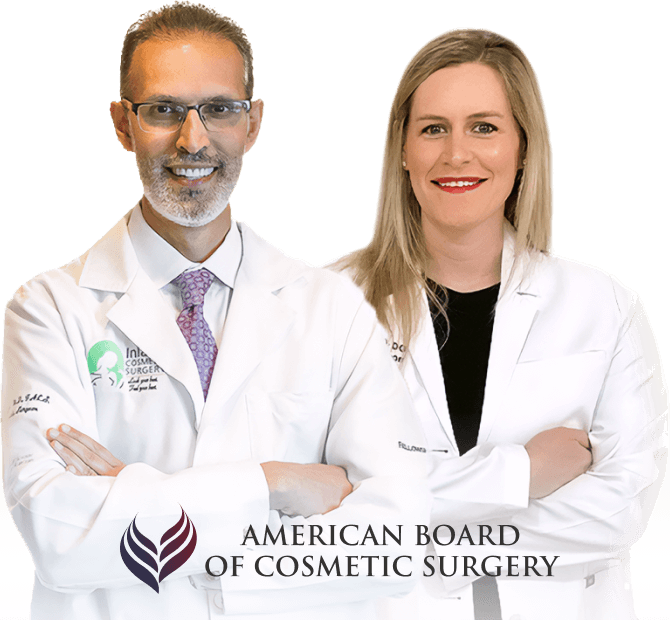Dr. Haiavy and Dr. Ryan know how to put fat in its placing using advanced fat grafting techniques
Fat isn’t always a bad thing, but it has a habit of showing up in the places we least want it—and disappearing from those where we could use a little extra. The face is a perfect example: as we get older, loss of subcutaneous fat can lead to a sunken, droopy appearance in the mid-face and along the jawline. To top it off, depressions in the skin, fine lines or a crepey appearance, and expression wrinkles start to become more apparent.
While injectable fillers are an increasingly popular non-surgical option for correct wrinkles and other signs of aging, we’ve found that autologous fat transfer can be an excellent option for many patients. This procedure can help contour the face, lift the cheeks and chin, and correct facial or body deformities.
How does fat transfer work?
Fat grafting is a way of restoring lost volume and proportion to the face through small incisions, minimal scars, and a fairly quick recovery.
Using liposuction techniques, fat is removed from a trouble area on the body, such as the abdomen, hips, or flanks. After purifying the harvested fat, it is then strategically re-injected into your areas of concern. This can be done under local anesthesia or IV sedation (twilight sleep). The process is repeated until the desired amount of fat has been transferred and an optimal outcome has been achieved.
“Everyone was super helpful and professional. Able to answer all questions and listened to what I wanted from this surgery.”
- Key Benefits
- Glossary
- Natural Improvement in Volume: Fat transfer adds volume to the face using the patient’s own fat, resulting in a natural look and feel.
- Lasting Results: Unlike some dermal fillers, the results of fat transfer can last for several years, as some of the transferred fat integrates into the facial tissues.
- Enhanced Facial Contours: Fat transfer can enhance and define facial features, such as cheeks, lips, and under-eye areas and smooth out wrinkles and creases.
- Dual Benefit of Liposuction: Fat is harvested from another area of the body (such as the abdomen or thighs) through liposuction, offering the dual benefit of fat reduction in that area.
- Adipose Tissue: Another term for fat tissue, which is harvested from one part of the body and transferred to the face in this procedure.
- Autologous: Refers to using the patient’s own tissues or cells. In the case of facial fat transfer, the fat injected is autologous.
- Cannula: A thin tube used to extract and inject fat during the fat transfer process.
- Facial Fat Transfer (Fat Grafting): A cosmetic procedure that involves harvesting fat from one part of the body and injecting it into the face to restore volume and youthful contours.
- Fat Harvesting: The process of collecting fat from a donor site on the patient’s body, typically through liposuction.
- Fat Processing: The method of purifying and preparing harvested fat before it is injected into the facial area.
- Liposuction: A surgical procedure used to remove fat from specific areas of the body, used in facial fat transfer to harvest fat.
- Microfat Grafting: A technique in fat transfer where fat is injected in small amounts for more precise volumization and contouring.
- Nanofat Grafting: A refined form of fat grafting where fat cells are further broken down to treat finer lines and skin texture.
- Recovery Time: The period needed for healing post-procedure, including the time for both the donor site and the facial injection sites.
- Volume Loss: The decrease in facial fullness due to aging or other factors, which facial fat transfer aims to correct.
Recovery & Results
With the fat transfer procedure, problems of rejection or allergic reactions are not factors because the fat is transplanted from your own body. Recovery time is very short, and patients are usually up and around the day of surgery.
While fat transfer is a great option for patients, there is a chance that some of the fat may be absorbed by your body over time—and you may need additional fat grafting procedures to achieve the desired contour. During your private consultation, we can help you learn more about our facial rejuvenation options and determine if fat grafting is the right choice for you.
Contact us today to get started!
Areas served:
Medically reviewed by Dr. Jacob Haiavy — Updated on Apr 10, 2025


